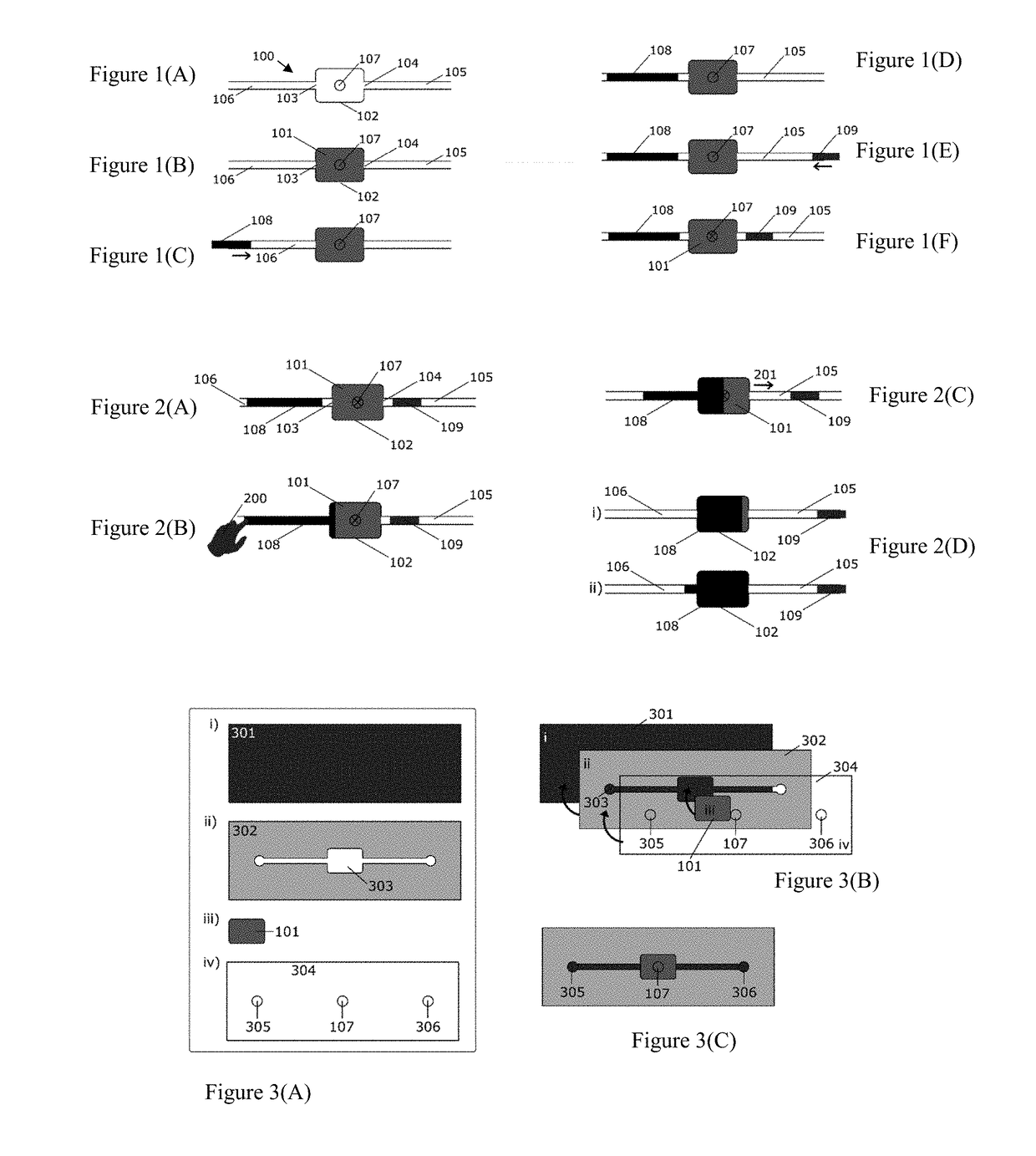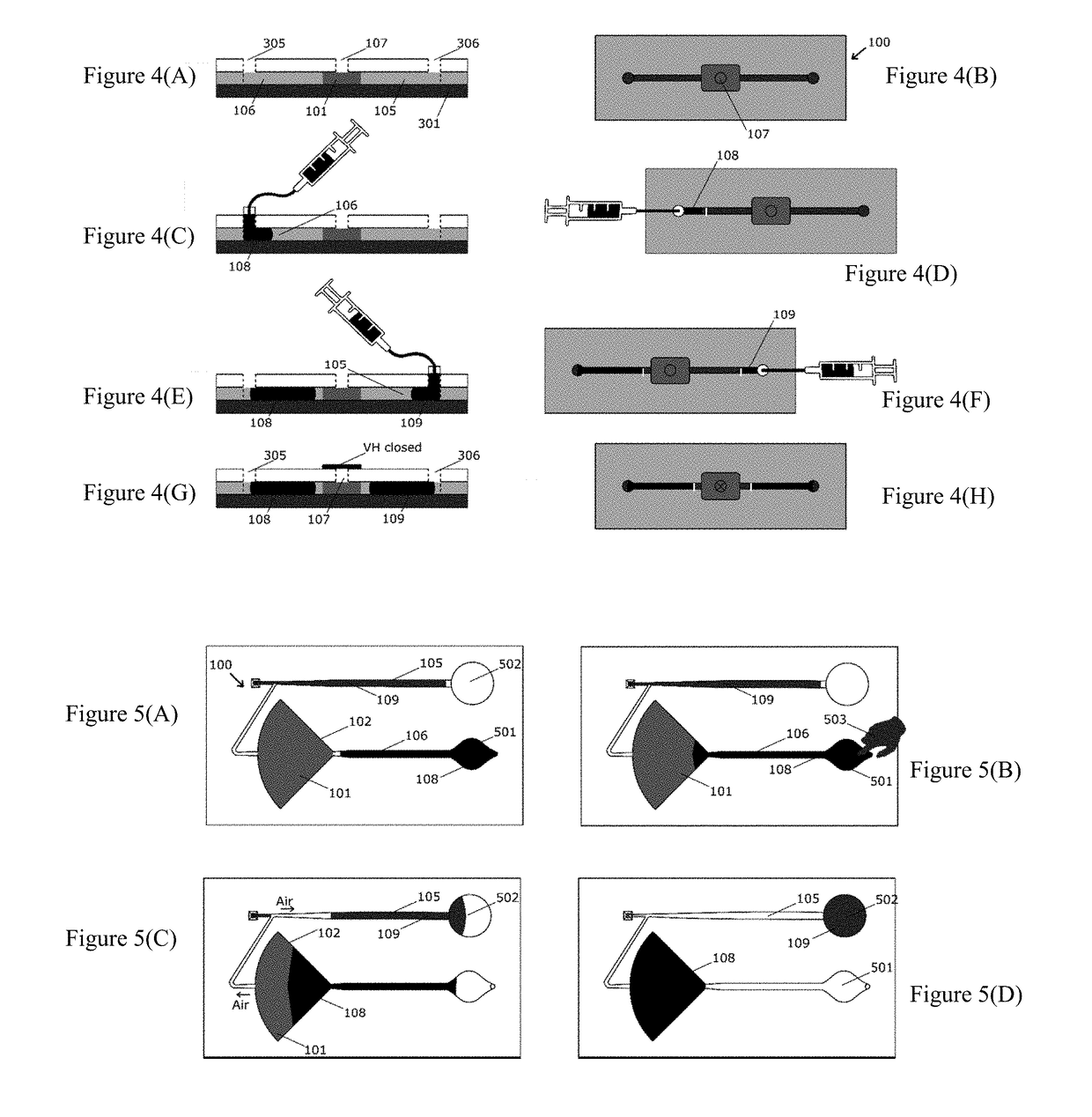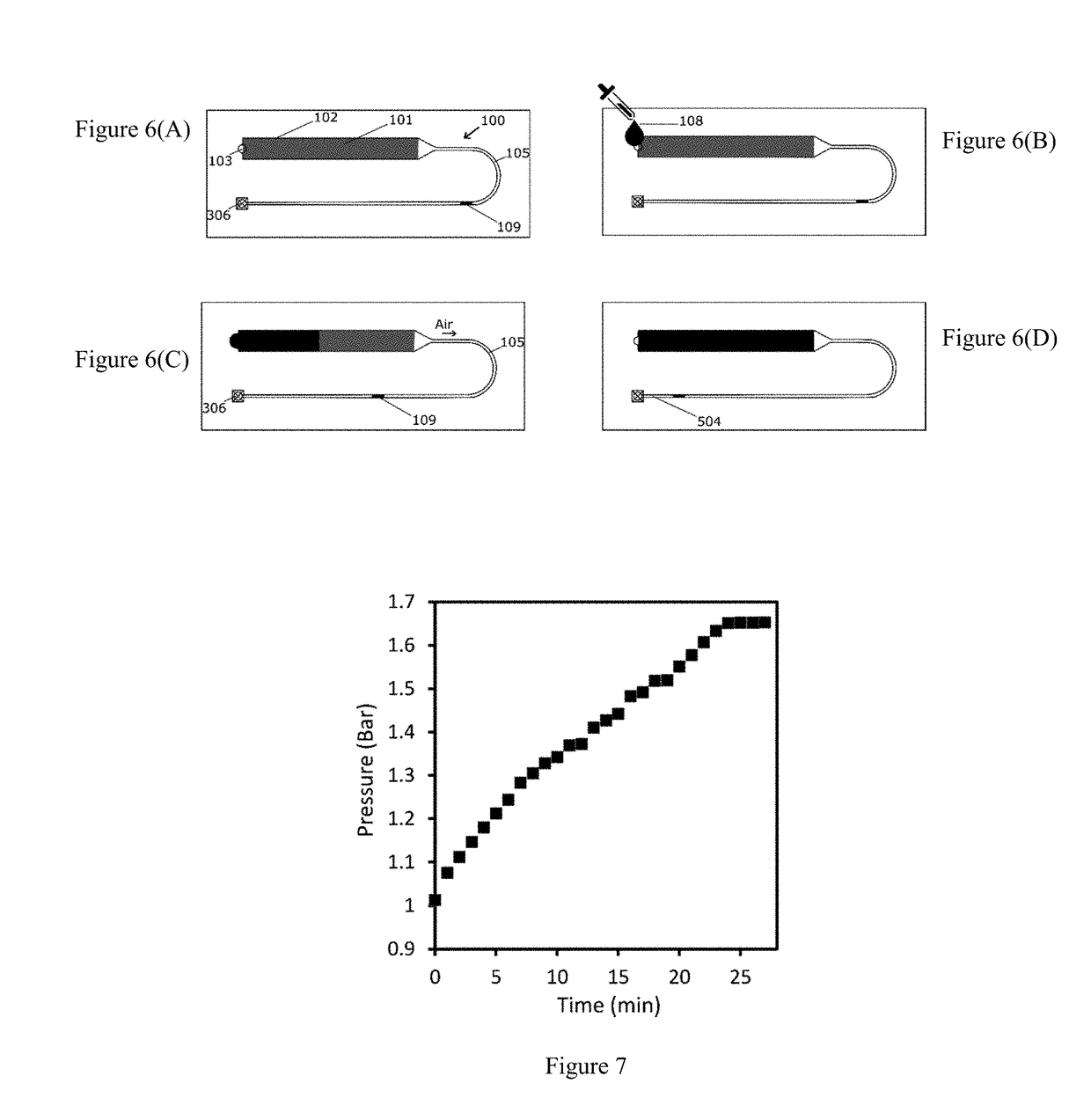Microfluidic systems
a microfluidic and microfluidic technology, applied in the field of microfluidic systems, can solve the problems of difficult control of flow rate and timing, large external cost of the large number of traditional loc platforms still requires external large and relatively expensive pumping mechanisms to control liquid flow, etc., to achieve easy chip use and low cost production
- Summary
- Abstract
- Description
- Claims
- Application Information
AI Technical Summary
Benefits of technology
Problems solved by technology
Method used
Image
Examples
example 1
on of a Propulsion Pump According to the Present Invention Using Double-Sided Pressure Sensitive Adhesive and Filter Paper as Solid Sorbent
[0361]Materials and Reagents
[0362]Double-sided pressure sensitive adhesive (PSA) tape (200MP 7956MP) and adhesive transfer tape (467MP) were acquired from 3M (USA). Two different thickness of PVC transparent foils (180 μm or 300 μm) were tested. Filter papers with different pore sizes (0.22-13 μm) (413, VWR, Belgium; SSWP, RAWP, HATF, HVLP, GSTF, Merck Millipore, Belgium) were used. Poly(methyl methacrylate) (PMMA) plate, 2 mm thick, was shaped with laser cutter. A digital tabletop craft cutter (Cameo, Silhouette, USA) was used to cut all the PSA, filter paper and PVC foil elements of the microfluidic device. A digital camera (D3200, Nikon, Japan) with a zoom lens (AF-S DX Zoom-NIKKOR 18-55 mm f / 3.5-5.6G ED II, Nikon, Japan) was used to video record the experiments.
[0363]Different filter papers used are specified in Table 1.
TABLE 1Properties of t...
example 2
of an Embodiment of a Propulsion Pump Fabricated According to Example 1
[0368]The mechanism underlying the operation of the propulsion pump according the previous examples the porous material used as solid sorbents, such as a filter paper have a given wherein the pores are filled with a gas, typically air. If the porous material is placed between the inlet and outlet of a microfluidic system, when a liquid present in the inlet side of the circuit, namely working liquid, gets in contact with the porous material, the working liquid is absorbed. At the same time, it pushes the air out of the porous material into the outlet channel. If the outlet channel is prefilled with an outlet liquid, the latter is pushed by the air towards the outlet of the microfluidic device. FIGS. 5(A) to 5(D) provide a step by step illustration of a propulsion pump according the present invention.
example 3
of the Forward Pumped Fluid in a Propulsion Pump System According to Example 2 in Relation to the Geometry and / or Pore Size of the Filter Paper
[0369]When it comes to a microfluidic system, one of the most important characteristic to take into account is the flow rate of the liquids that flow through the network. Different methods can be adopted to tune the flow rate, such as changing the channel geometry to increase or decrease the flow resistance or acting on the pumping mechanism. In the latter case for paper microfluidic solutions, it means to change paper type, shape and size. Although any water absorbing porous material could be used in the iSIMPLE concept, we selected a laboratory filter paper since its properties are well defined, it is easy to cut and it is compatible with our fabrication method.
[0370]To test this, the device was designed and prepared as described above with the overall size of the device being slightly bigger than a standard microscopy slide (35×80 mm). The...
PUM
 Login to View More
Login to View More Abstract
Description
Claims
Application Information
 Login to View More
Login to View More - R&D
- Intellectual Property
- Life Sciences
- Materials
- Tech Scout
- Unparalleled Data Quality
- Higher Quality Content
- 60% Fewer Hallucinations
Browse by: Latest US Patents, China's latest patents, Technical Efficacy Thesaurus, Application Domain, Technology Topic, Popular Technical Reports.
© 2025 PatSnap. All rights reserved.Legal|Privacy policy|Modern Slavery Act Transparency Statement|Sitemap|About US| Contact US: help@patsnap.com



